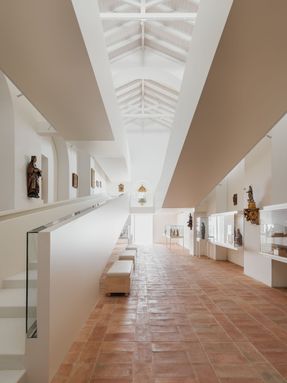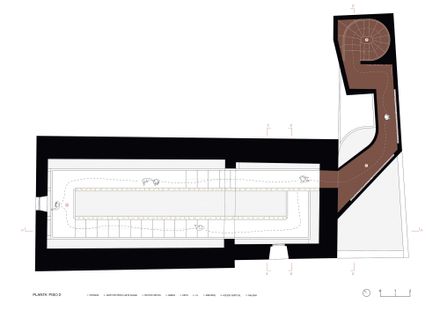
Collector's House Museum
ARCHITECTS
Atelier Data
CONSTRUCTION
António José Afonso Brito, Andrade e Filhos, Quinta da Madeira
DESIGN TEAM
Filipe Rodrigues, Inês Vicente, Marta Frazão, António Pedro Faria, Filipa Neiva, Joana Matos, Rafael Gomes
YEAR
2024
LOCATION
Moncarapacho, Portugal
CATEGORY
Museum
Brief history of the building: The construction of the chapel began in 1750 under the orders of the Franciscans and was completed in 1772 when the congregation gathered the necessary funds for its completion.
With the extinction of religious orders in 1834, the building had various uses, including being used as a local "tavern."
In 1954, the father of the current owner acquired the building, and in 2002, his son inherited the property.
Regarding the future of the building, the current owner, João Calçada Correia, explains: "Considering the religious history of this building, and the fact that I am an art collector, I believed the best use for it would be to transform it into a museum, thus giving the property a dignified purpose."
Project Strategy: Adapting the building into an exhibition space resulted in an intervention that balanced the preservation and restoration of the existing structure with the introduction of newly built elements that accommodate the distinct collections: sacred art, exceptional canes, and ivory paintings.
Given the exceptional nature of the pre-existing building: its large nave and its rear courtyard, the project focused on designing a path that is simultaneously an exhibition space, organizing the three collections in a linear and continuous manner:
In the main nave (utilizing its walls and niches), the Sacred Art collection is displayed, symbolically reinforcing the origins of the original construction.
The Cane collection is distributed along a ramp, an element that takes advantage of the building's verticality.
This element was designed as a promenade that "floats and rises" in the space, inciting and stimulating the visitor’s sense of discovery.
Moving forward from this element, over the courtyard space, a third structure is proposed — a suspended volume that hosts the Ivory Paintings exhibition, ending with a spiral staircase that brings visitors back to the ground floor, more specifically to the patio at the rear of the former chapel.
In order to create a balance between tradition and innovation, the new elements adopt distinct materialities according to the type of art piece being displayed: The ramp is made of a steel structure, covered with metal sheet, and painted white.
It is designed modularly and accommodates an extensive number of canes (with an exhibition surface of approximately 45 linear meters).
Its modularity also facilitated its installation within the building.
In contrast, the suspended exterior volume, which houses the ivory artworks, adopts a totally dark interior, creating a dimly lit, intimate space that invites the viewer to focus on the details of the small pieces on display.
The courtyard space and nave’s main area, on the other hand, recover the typical materials of Algarvean (southern region of Portugal) constructions: terracotta tile flooring, whitewashed walls, and "canudo" tiles on the main roof.
The main door to the museum — made of wood and painted in a blood-red color — replicates the original door model that was previously in place.
Finally, the lighting strategy aimed to enhance the unique characteristics of the space, particularly its inherent dramatic atmosphere, reflecting its original function as a place of worship.
Regarding natural light, this condition was manipulated through targeted openings that create contrasts between strongly illuminated areas and others in shadow.
As for artificial lighting, all efforts were focused on spotlights for the pieces and objects on display, as opposed to general, more homogeneous lighting with lower intensity.














































